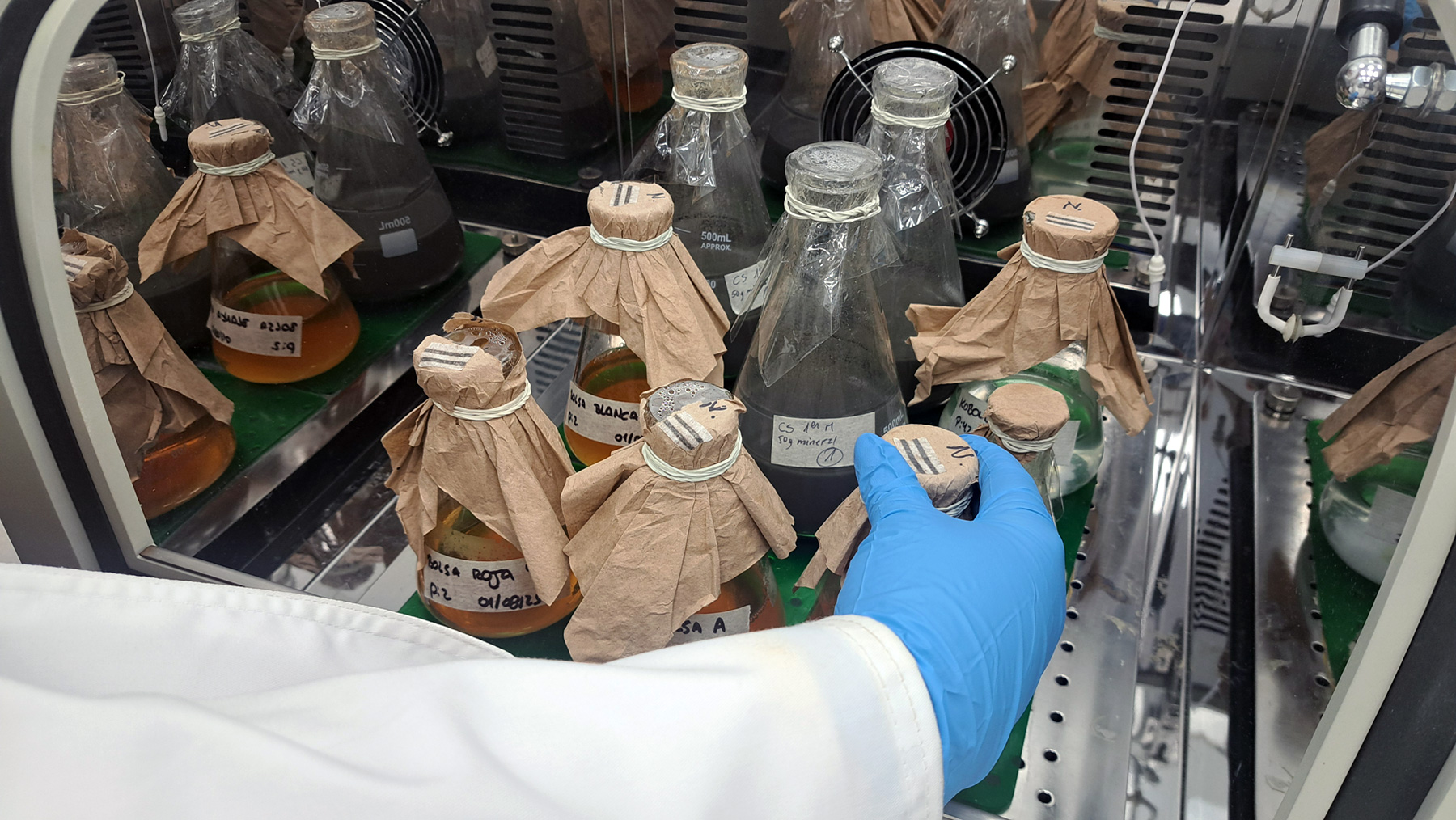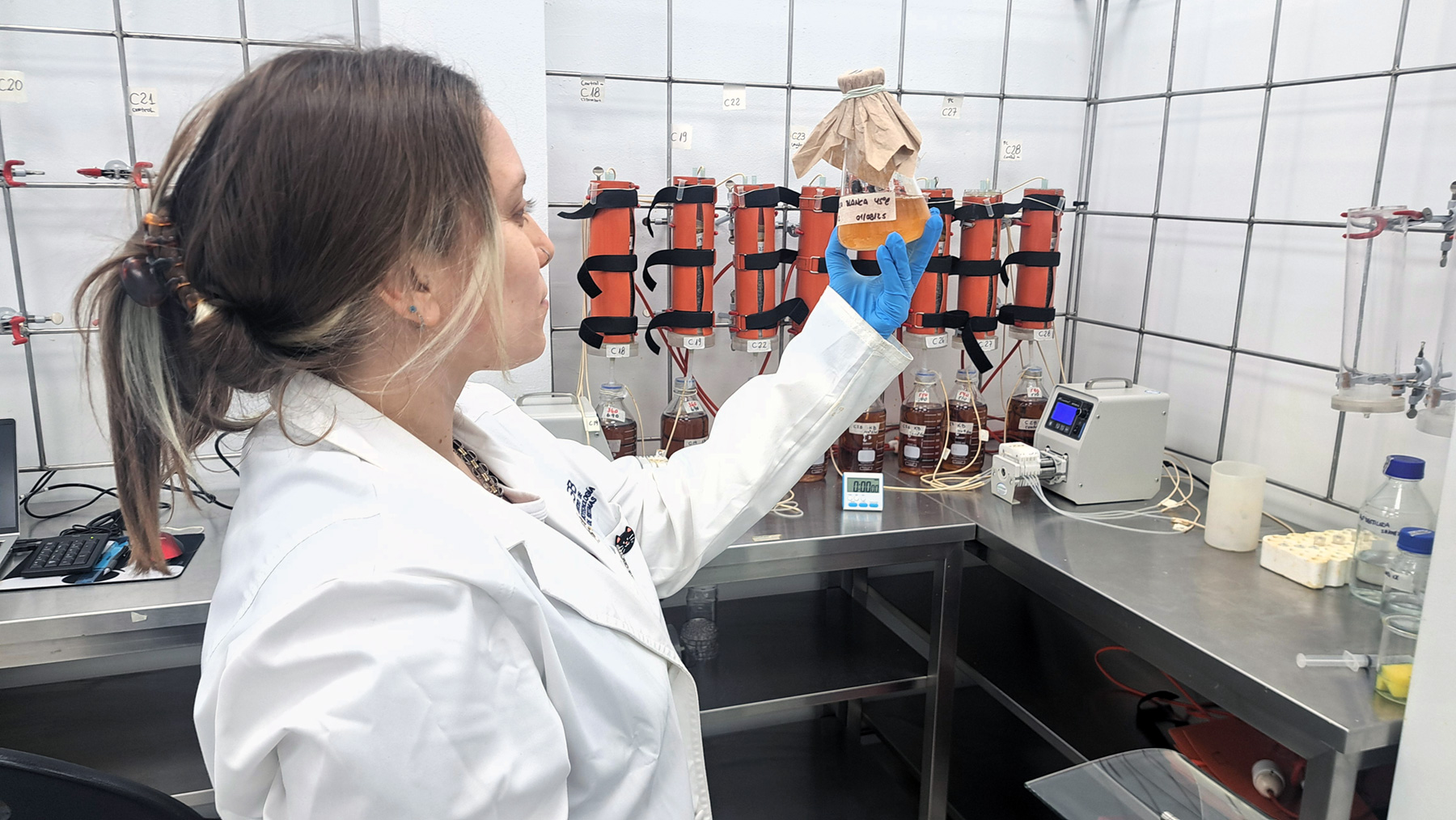Bioleaching is a process that uses living microorganisms to recover valuable metals. The Cobalto Verde project applies this biotechnology to extract metals associated with pyrite in IOCG (iron, copper, and gold oxide) mining tailings, which are predominant in the Coquimbo and Atacama regions.
Pyrite is a mineral that causes significant environmental problems due to its potential to produce acid mine drainage when it comes into contact with water and oxygen, as occurs when it rains.
By feeding on the iron and sulfur that make up pyrite, microorganisms not only release the metals of interest, but also contribute to eliminating this environmental liability.

Kobold Consortium for the recovery of valuable metals
To recover cobalt and other valuable metals from mining tailings and concentrates, researchers at the Center for Systems Biotechnology at Andrés Bello University isolated a specific consortium of biomining microorganisms that they named Kobold.
The microorganisms that make up this consortium come from samples taken from mining processes in the Atacama Region and were stabilized in the laboratory through a “domestication” process, which included work in flasks, bioreactors, and columns to ensure consistent growth.
Kobold consists of three main strains: Sulfobacillus thermosulfidooxidans, Acidithiobacillus caldus, and Leptospirillum sp.
At the laboratory level, Cobalto Verde technology has achieved significant results:
- Up to 70% cobalt recovery and 65% iron recovery were achieved in flasks agitated for 15 days of operation.
- Cobalt recoveries of up to 93% have been achieved in the bioleaching of tailings samples in column tests.
In addition to cobalt, the bioleaching process allows for the recovery of other valuable metals associated with pyrite, such as nickel, copper, zinc, and iron.
Both the Kobold consortium and the bioleaching method developed are presently under patent review process in Chile and 157 other countries.

How does bioleaching differ from traditional leaching?
- The bioleaching process is more sustainable and less polluting than traditional chemical leaching because, among other things, it requires less acid and speeds up production processes.
- The optimal dissolution of pyrite through bioleaching generally occurs between 30° and 45°C, taking advantage of the activity of mesophilic and moderately thermophilic microorganisms.
- The microorganisms used can withstand and bioleach under extremely acidic conditions.
- Bioleaching allows a simpler operation without energy expenditure on agitation, unlike agitated leaching tanks.
Learn more about the process in this infographic:
